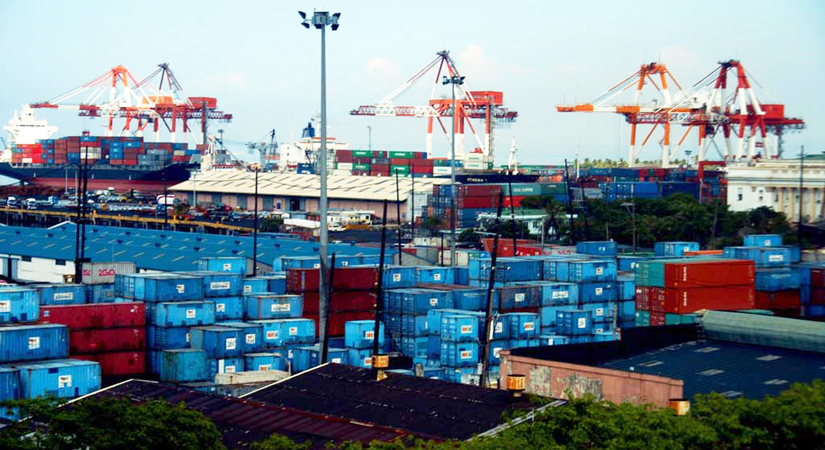By Business World, June 26 2019
https://www.bworldonline.com/firms-more-bullish-families-bearish-in-q2/
Image Credit to Business World
BUSINESSES were on the whole more confident of prospects this quarter compared to the preceding three months as they expected improved demand — marking the second straight quarter of improvement — but households turned slightly more pessimistic in the same comparative periods in the face of rising prices, according to results of the central bank’s latest surveys on these two segments that were released to media on Tuesday.
BUSINESS BETTER
The Bangko Sentral ng Pilipinas’ (BSP) second-quarter Business Expectations Survey — conducted on April 1-May 28 among respondents representing 1,501 firms nationwide — showed that “[b]usiness outlook on the economy improved for the second consecutive quarter in Q2 2019, with the overall confidence index (CI) rising to 40.5% from 35.2% in Q1…”
Respondents were drawn from the Securities and Exchange Commission’s list of top 7,000 corporations in 2010 and BusinessWorld’s Top 1,000 Corporations in the Philippines for 2017, consisting of 590 firms in Metro Manila and 911 others in areas outside the National Capital Region, covering all regions.
A positive CI means that the number of optimists in the survey increased and continued to be greater than the number of pessimists during the quarter. The index is computed as the percentage of respondents that answered in the affirmative less the percentage of those who answered in the negative with respect to views on a given indicator.
In a press release summarizing survey results, the BSP noted that respondents cited as reasons for their improved sentiment: a seasonal uptick in demand during the dry months especially with an expected increase in local and foreign tourists, harvest period, upcoming school enrollment, election-related spending in the run-up to the May 13 legislative and local polls, sustained increase in orders and projects leading to higher volume of production, expansion of businesses and new product lines, as well as continued rollout of government infrastructure and development projects with the April 15 approval of the P3.662-trillion 2019 national budget.
“They were also optimistic that their business operations would benefit from the favorable macroeconomic conditions in the country, particularly the easing of inflation in 2019,” BSP said in its statement, noting that “[t]he sentiment of businesses in the Philippines mirrored the more positive business outlook in Canada, France, Greece, Hungary, Israel, and South Korea.”
Asked on their outlook for the “next quarter”, however, respondents became less optimistic, with the CI falling to 47.6% from 52% in the preceding survey on “expectations of interruption of business activities during the rainy season and stiffer competition.”
Among business segments, exporters turned out to be the most bullish for the current quarter due to improved availability of raw materials (e.g., coconut products); increase in demand for business process outsourcing services like information technology consulting and call centers; and easing inflation.
Importers and domestic market-oriented firms were generally more optimistic amid expectations of robust consumer demand and continued government spending.
Sentiment of service sector respondents was less upbeat — particularly in transport, real estate, as well as community and social services — amid concerns over the planned closure of provincial bus terminals along EDSA to ease traffic, limited operations of sea vessels due to scheduled drydocking, and a lean season for medical services as households prioritized enrollment expenses.
Construction was less upbeat — especially in the face of the four-month delay in national budget approval — “as they await implementation and payment of government infrastructure projects.”
Employment outlook for the “next quarter” remained positive although lower at 26% compared to the preceding survey’s 29.7%, suggesting that “more firms will continue to hire new employees, although the number of new hires may be lower compared to the previous quarter’s survey.”
The percentage of respondents who said their businesses will expand in the “next quarter” was slightly higher at 33.5% compared to 33.2% in the preceding survey.
Business respondents also expected financial conditions to remain tight but access to credit to be easy.
Survey results also showed that businesses expected the peso to appreciate, inflation to ease, but interest rates to increase for the current quarter, although they expect the peso to depreciate and inflation and interest rates to increase in the third quarter.
Business respondents also expected that the rate of increase of commodity prices will remain within but at the upper bound of the government’s 2-4% inflation target band for 2019, at 3.9% for the “current quarter” and four percent in the “next quarter” (from five percent and 4.9%, respectively, in the preceding survey).
Moreover, businesses expected that the peso to average P52.30 to the dollar this quarter and P52.40 next quarter.
HOUSEHOLDS
The picture was different for households, however, with the CI in the Consumer Expectations Survey (CES) baring a “marginal decline” to -1.3% for this quarter from -0.5% in the preceding survey.
This indicates that the pessimists continued to outnumber optimists, even as the margin — while increasing slightly — remained narrow from the preceding quarter.
The CI is computed as the percentage of households that answered in the affirmative less the percentage of households that answered in the negative with respect to their views on a given indicator.
The overall consumer CI measures the average direction of change in three indicators, namely: overall condition of the economy, household finances and household income.
The second-quarter CES was conducted on April 1-13 among 5,583 households nationwide.
Respondents attributed their slightly weakened outlook for the current quarter to their expectations of higher prices of goods and household expenses, poor health and high medical expenses, as well as Metro Manila’s water crisis.
Partly offsetting negative sentiment were expectations of improved law and order, additional income, availability of more jobs, good governance, and additional working family members.
For the “next quarter” and the year ahead, consumer confidence was less optimistic as the CI declined to 9.7% from 10.7% in the preceding survey for the “next quarter”, and to 25.2% from 28.4% for the next 12 months.
“Respondents’ less upbeat sentiment for the next quarter and the year ahead stemmed from households’ concerns about higher prices of goods, as well as expectations on the increase in household and educational expenses with the start of school opening for the school year 2019-2020,” the BSP said in its statement.
Household respondents’ spending outlook for the next quarter for basic goods and services declined to 32.7% from 39.6% in the preceding survey, suggesting “that while more respondents continue to expect higher spending on basic goods and services, the number that said so decreased compared to a quarter ago, indicating that growth in consumer spending may slow for the next three months.”
“Fewer respondents expected higher spending on electricity, food, non-alcoholic and alcoholic beverages and tobacco, water, fuel, transportation, personal care and effects, medical care, communication, clothing and footwear, restaurants and cafes, and house rent and furnishing,” the statement read, while spending outlook steadied for education, recreation and culture.
The percentage of households that considered the current quarter as a good time to buy big-ticket items — particularly real properties, consumer durables and motor vehicles — rose to 29.6% from 26.5%.
Spending outlook for the next 12 months remained positive and was “broadly steady” — especially for consumer durables and real properties — while and “more buoyant outlook” was noted for motor vehicles.
Latest survey results also showed that households expected inflation, interest and unemployment rates to increase and the peso to depreciate in the next 12 months.


